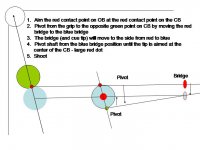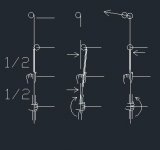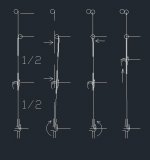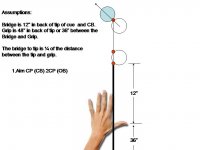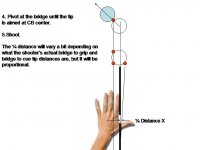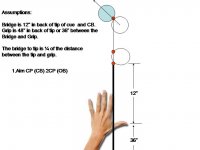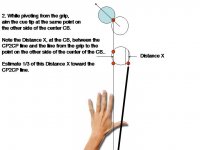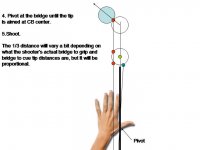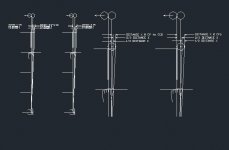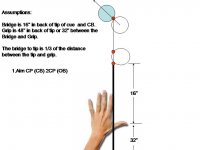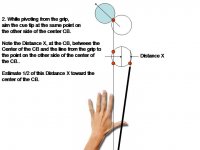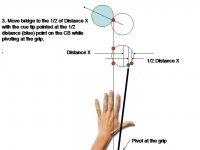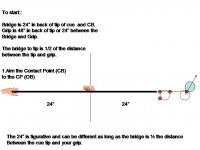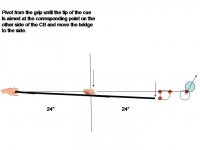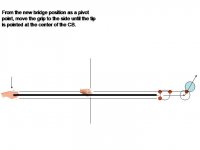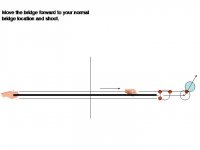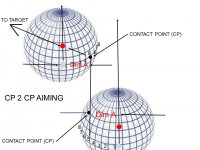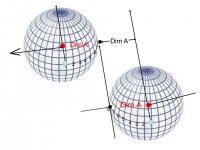LAMas -- I see you edited post #1 today so that the first pivot (pivoting from the back hand by moving or deforming the front hand) is now done with the front hand much farther from the tip than a normal bridge length. Then you slide the front hand forward to the normal bridge length after the second pivot. That certainly addresses my point in post #2 about the lateral bridge shift being too large if the front hand is at a normal bridge length.
Nice work! I wonder how good of an approximation it is, i.e., how close it comes to geometrically correct, for all cut angles with a back-hand grip of various lengths like 45", 50", 55".
If anyone is reading this thread and wondering what the heck it's all about, here's a little explanation. In contact-point-to-contact-point (CP2CP) aiming for cut shots, one normally just visualizes the line or vertical plane running through the two contact points (or, equivalently, cutting off equal-but-opposite portions of the two balls) and then aligns the cue stick through CB center, parallel to the plane or line through the contact points.
So the cue may not ever really be on the line through the contact points. But some people have a bit of a problem placing the stick parallel to that line, because the shooter can look down only one line at a time -- the line through the contact points or the line through center CB.
So this thread (and others in the past) is talking about trying to put the cue stick on the shot line through center CB with two pivots, the first one pivoting around the back-hand grip and the second one pivoting around the front hand "V." I've likened it to "parallel parking" the cue stick on the shot line.
Yes, this is kind of awkward in actual operation. Better to just go directly to the shot line through center CB if you can. Or even use a shot line through the two contact points; that works well in many instances. Or align the stick through the two contact points and then make just one pivot (with the front hand, around the back hand) back to center CB or even just part way to center CB. This last way isn't geometrically correct, but will still work for many shots.
There are many ways to try to skin this cat. A double-pivot method is kind of neat, and may even work well for some.
